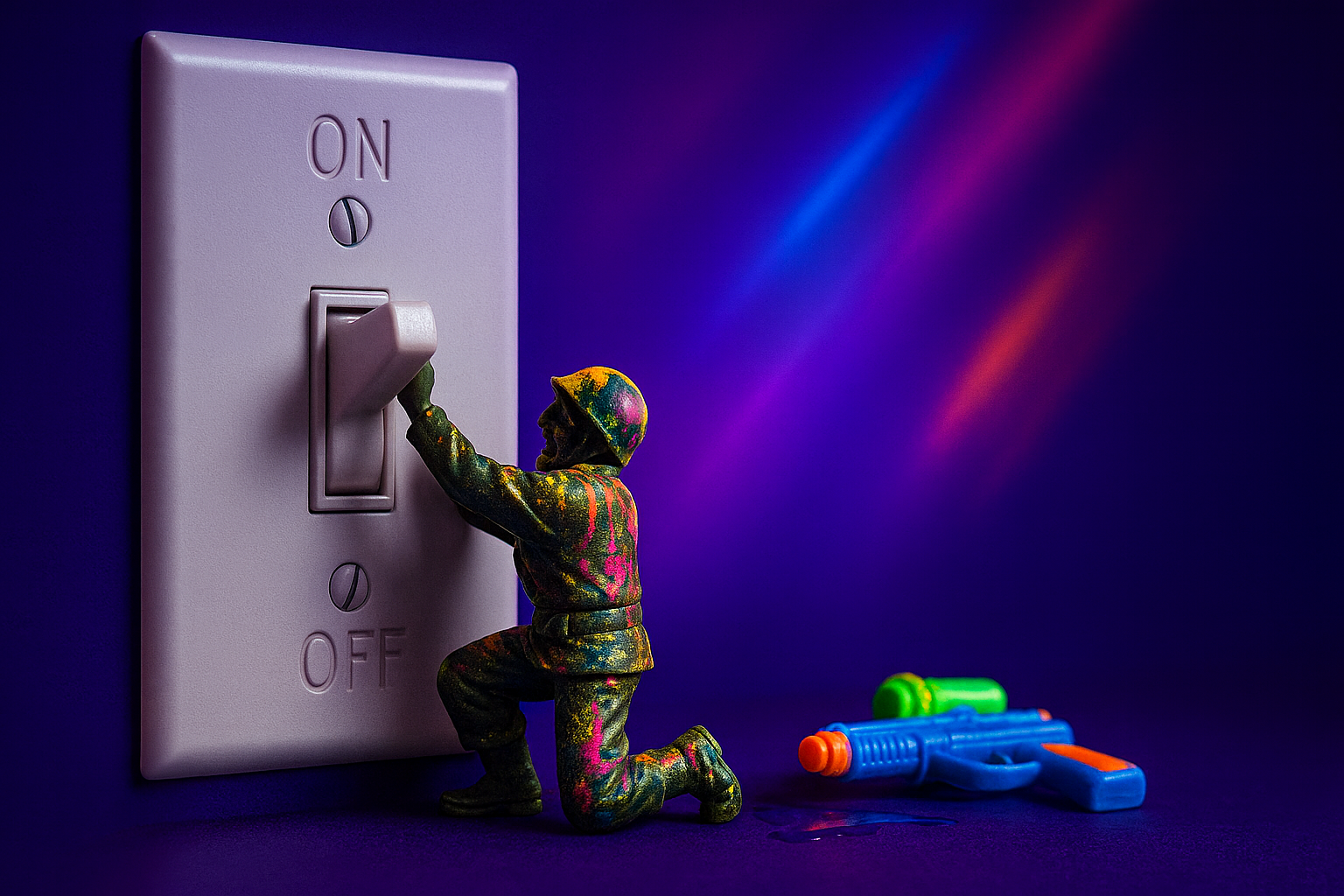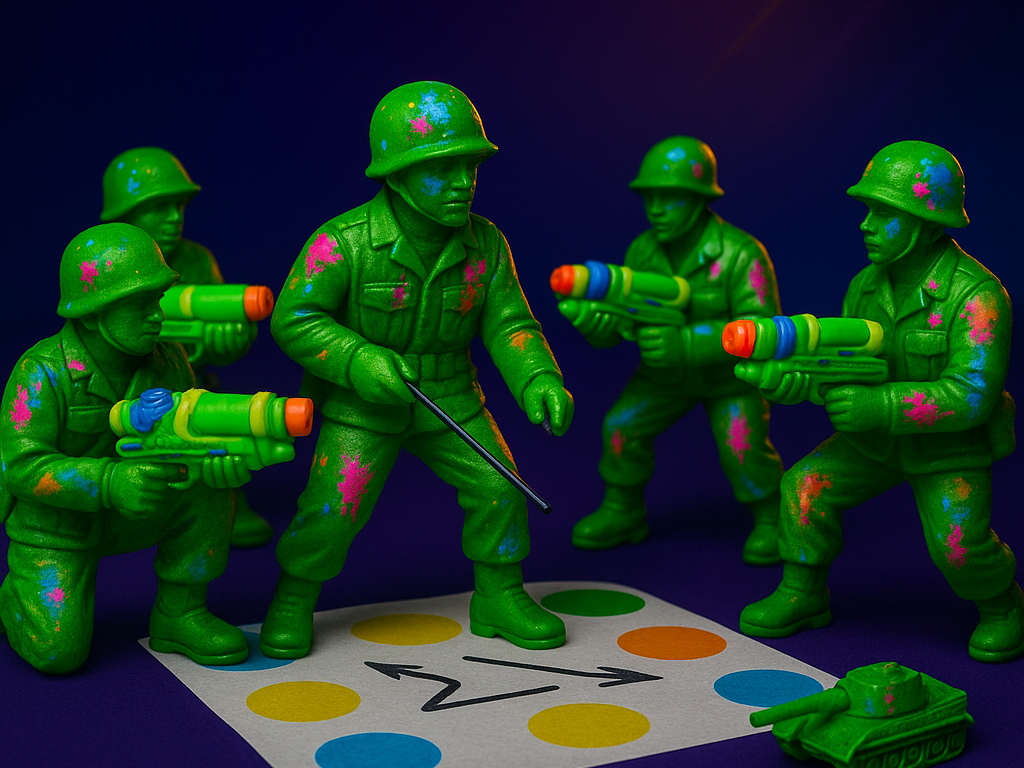Ownership is not a switch you flip. So what is it then?
Just take more ownership, guys.
We’ve all heard it. Sounds nice if you want to shake up a team when things go wrong… but in practice it means nothing.
Because ownership is not a switch you flip. It’s part of the company culture. And culture is more than a slide in a deck or a mural of slogans on the wall. “We take ownership.” “We are transparent.” Looks nice, but it’s empty if no one lives it.
Culture grows through behavior. Through what people actually do in their daily work. From top to bottom. And that’s hard if your team already exists and the culture has been shaped for years.

Ownership is a container concept
And here’s the thing: ownership is a container concept. Everyone has an opinion on it, and it can be seen from countless angles. Ask ten people what ownership means and you’ll get ten different answers. Sometimes even the biggest nonsense.
There are shelves full of books on the subject. Some are really good and very helpful. But no two are the same:
👉 Extreme Ownership (12 principles from the military world. Discipline, no excuses, hard and direct)
👉 Ownership Thinking (how to build a culture of accountability in organizations and end entitlement)
👉 The Ownership Mindset (ownership as a personal conviction and mindset you can develop)
All valuable. But completely different.
And that’s the strength and the confusion of ownership. There is no universal recipe. Every industry, every team, every context interprets it differently. And yet everyone wants the same thing: autonomy and mandate. A sense of purpose.
So where do you start?
And that’s the catch. Because if no two books are the same, it makes perfect sense (and I’ve seen it myself in teams) that ownership doesn’t just appear out of nowhere.
The question is: where do you begin?
And my default approach is always to be stubborn enough to say: "By making it small." Because the broader and more abstract the concept, the more likely teams are to drown in it. I like to make things simpler. Not easier in a lazy sense, but simpler so everyone understands it, and no one has to overthink it. Workable, so people actually want to use it. That’s why I created a framework. Not to shove my method down teams’ throats, but to make ownership tangible. Visible in your process. So it becomes part of your culture step by step.
Why ownership often fails
First, let’s look at why ownership often fails. Why are there so many books, all so different? I see it in teams all the time: ownership isn’t missing because people don’t want it, but because the environment makes it hard.
👉 Lack of confidence (people don’t dare admit mistakes or say they don’t understand something)
👉 Lack of safety (the environment is so tense you’re better off keeping quiet)
👉 Lack of clarity (no one knows who can decide or who should pick up a task, especially in fast-changing contexts)
The result? Tasks pile up. Decisions get postponed. Or people keep working, but without energy.
Everyone deserves ownership
And that’s exactly my point: everyone in an agile team deserves ownership. Agile is built on transparency and learning. That only works if you can say:
“I’m not at my best right now.”
“I can’t pull this off the way it’s currently set up.”
“We don’t have the mandate, we need to check first.”
“We need to address it if mistakes keep happening.”
Ownership shouldn't be extra work. It’s the culture where this is normal. Where you ask questions, discuss mistakes, and take responsibility.
Performance and process go together
Many teams focus only on output. But ownership is about more than delivery. It’s also about the process of delivering.
A team that embraces ownership:
✅ Works more efficiently because it’s clear who does what
✅ Learns faster because mistakes are discussable
✅ Grows because trust is the foundation
Agile is about constant improvement. Ownership is the catalyst.
So... How to make it visible
Ownership only becomes part of the company culture when it shows up every day in team habits, and when leadership supports it with trust and clear mandate. Not heavy, not complex. Small and practical.
In the stand-up, for example, besides the classic questions (what did you do yesterday, what will you do today), add one of these:
👉 What’s worrying you?
👉 What’s holding you back?
The first question opens the door for concerns and risks. The second makes barriers concrete so the team can act. Together they reveal what really matters.
It’s not about complaining, but about transparency and growth. Saying: this is too big, I need something to move forward.
I’ve built a framework
After years in teams I know: ownership doesn’t just happen. It’s not a button. It’s a process. And often a tough one.
That’s why I created the Agile Ownership Framework.
Not as a new methodology, but as a guide. A thin layer on top of agile.
Four simple rules:
Speak out your norms and values
Define a team goal that’s bigger than the sprint
Make decisions visible with a decision tracker
Keep adjusting it to your context
And most importantly: ask the right questions. Can we do this? Are we allowed to? What do we need?
I’m not claiming this is the truth. What I do know: teams often don’t have a starting point. This framework gives just enough structure to make ownership visible and to practice it. The rest is up to the team.
Final thought
Ownership is culture. And culture is not a poster on the wall. It’s not a switch you flip. It grows through behavior, through trust, and through mandate.

Agile gives you the rhythm to build that culture. Ownership is the catalyst that makes teams not just run, but truly ignite.
👉 That’s why I share this framework. Not as the truth, but as a starting point. A way to make ownership tangible in your team. Try it. See if it works for you. And let me know. You can find it here.
